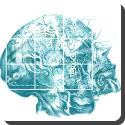 If you touch a hot metal object, you will yank your hand away immediately. When this happens to you the first time, the sequence of events and the result (the burning of your hand) gets stored in your brain. This is what we call an experience.
If you touch a hot metal object, you will yank your hand away immediately. When this happens to you the first time, the sequence of events and the result (the burning of your hand) gets stored in your brain. This is what we call an experience.
When you see a hot metal object next time, you will not touch it. You will use the knowledge of your previous experience and decide to not repeat it again.
This process of learning, comparing a previous experience, making a decision and acting upon it is the key to human intelligence. We can make more and more complicated decisions by learning from our past experiences.
Ever since machines were invented, scientists have dreamt of making them learn and perform intelligent tasks – like humans.
Artificial intelligence is a branch of science which is into making machines think like humans. These machines, or computers, can store large amounts of information and process them accurately and at an amazing speed. What they lack is an ability to learn and make ‘intelligent decisions’.
What do we need to make an intelligent machine? A memory or a space where experiences or information can be stored, a method of applying these experiences to new ones, comparing experiences to come to logical conclusions, like holding the hot object with a glove on. That would be an intelligent machine.
Take your iron for example. The electric iron understands that its temperature is beyond what is required and automatically switches itself off.
We could say that the electric iron is intelligent as it can react to a particular state (the iron being hot), make a decision based on it and switch itself off. However, since the iron has not learned this through experience, it is not a truly intelligent machine.
Scientists are creating new software programs which try to recreate the process of human learning in a computer, in an attempt to make them ‘think’. These programs try to copy the functioning of the brain. One such program is called a neural network.
A neural network
Our brain is composed of millions of densely packed cells called neurons. Each neuron is like a tiny individual switch in a net of billions of such neurons.
Whenever a particular piece of information, like someone’s telephone number reaches your brain, it creates a pattern of on and off switches using these neurons.
Let’s use an example to understand this phenomenon. We put up garlands of electric lights to decorate our houses during Diwali. These lights create various patterns and designs, one switch creates a series of circles, another switch a pattern of flowers and so on.
A neural network is like these garlands of lights: a particular input creates a particular pattern. Each nerve cell or neuron in our brain acts like a light bulb. It creates a particular pattern on receiving an input.
When we memorise someone’s telephone number, we actually create a pattern in our brain. And when we try to remember the same number, we simply try to recreate that pattern, unlike the lights which need to be switched on or off everytime that pattern needs to be created.
A neural network is a copy of the brain’s functioning inside a computer, using a software program. It can be taught to recognise patterns.
In fact, when it is trained, it can classify and identify patterns in a large amount of information. It can do all this at very high speeds and sometimes faster than humans.
This throws open innumerable possibilities. Imagine computers, which can look at the past weather and climate data, match them with current conditions and tell us where it is going to rain and how much.
Turing’s test
In 1950, famous mathematician Alan M. Turing devised a method of testing a computer’s intelligence. A person is kept inside a closed cell and asked to speak to a hidden human being and a computer.
The person, who is also called the interrogator (one who questions), does not have any clue about who is the human being and who the machine. His task is to find out which of the two candidates is the computer, and which is the human by asking them questions.
If the interrogator is unable to decide within a certain time, the machine is considered intelligent. However, there has been no machine till date which has been able to pass the Turing’s test. This remains one of the biggest challenges of modern day computing.
Although computing sciences have made a lot of progress, passing the Turing’s test might be difficult for computers for some time to come.
 Kids Portal For Parents India Kids Network
Kids Portal For Parents India Kids Network






